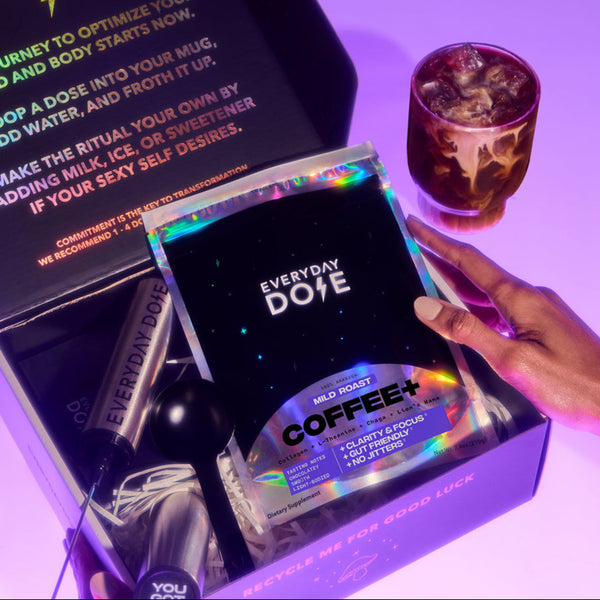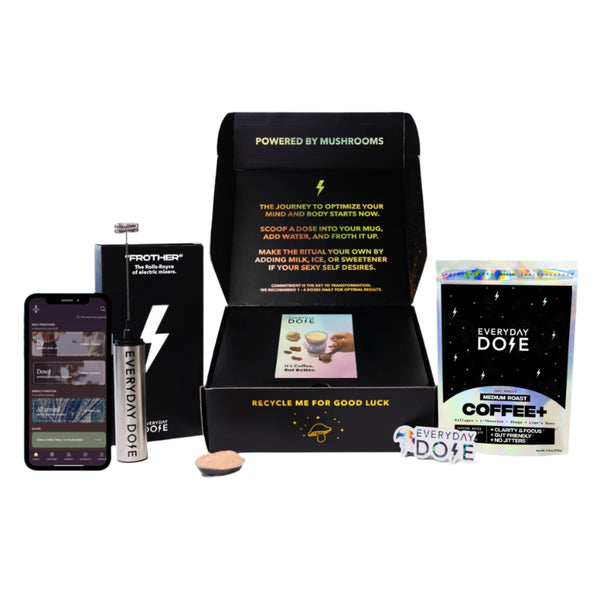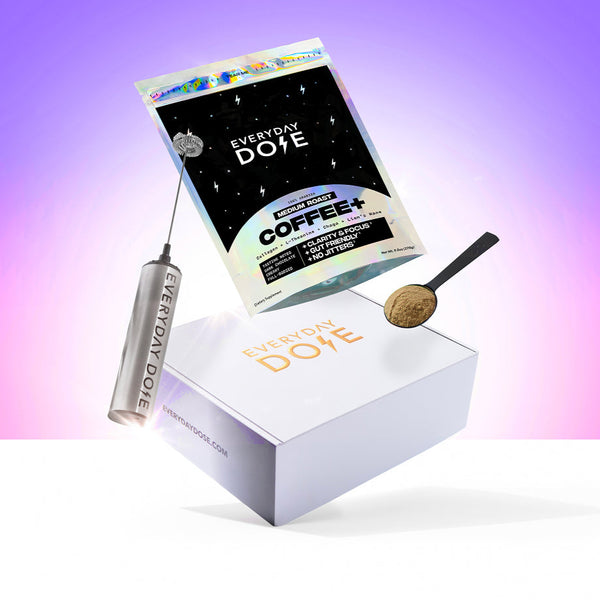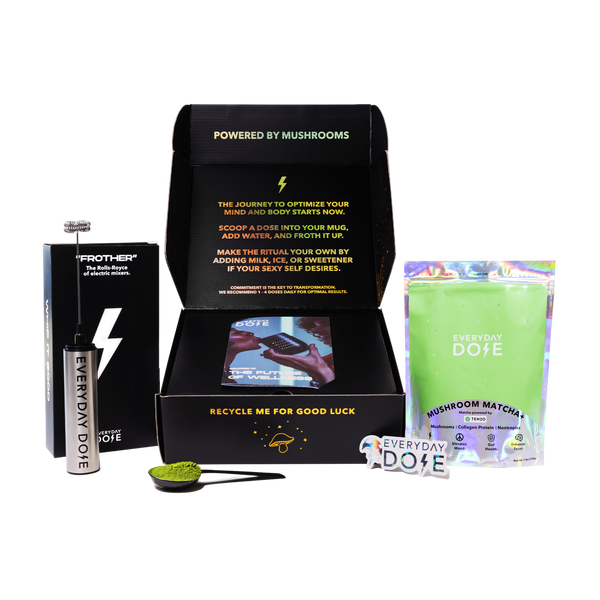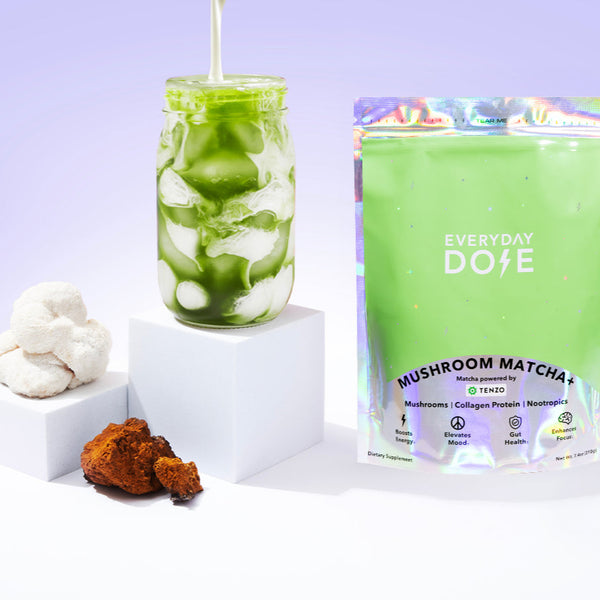4 Best Ways To Take Collagen

At first glance, choosing between collagen capsules, powders, and liquids might not seem like a big deal. You should just choose the option you vibe with most, right?
Unfortunately, it can be a little more nuanced than that. Read on to learn the best ways to take collagen, the pros and cons of each, and what else you can do to support your body’s collagen production.
Why Should You Take Collagen?
Let’s start with the basics. Collagen is basically the glue that holds your body together. It’s the most abundant protein in your body — you can find it in your skin, bones, muscles, tendons, ligaments, and even blood vessels. Your body naturally makes collagen, but once you hit your 20s, production starts to dip. By the time you’re in your 30s or 40s, you can start to see signs of low collagen like wrinkles, achy joints, and brittle hair.
There are several types of collagen, but the ones most relevant to your glow-up are:
- Type I: Found in skin, bones, and tendons.
- Type II: Mostly in cartilage and joints.
- Type III: In skin, muscles, and blood vessels.
This is where supplements come in. While eating a balanced diet can help support natural collagen production, it’s not always enough, especially if you’re dealing with stress, sun exposure, or aging.
That’s why collagen supplements have exploded in popularity recently. Studies show that hydrolyzed collagen can be absorbed into your bloodstream and may encourage skin hydration, smooth out wrinkles, and support joint health.
4 Best Ways To Take Collagen
So, collagen clearly has some benefits — but what’s the best way to take advantage of those benefits? Here are the top four ways you can add collagen to your diet.
1. Peptide Powder
Collagen powders, especially hydrolyzed collagen peptides, are hands-down one of the best choices for most people. This is because they’re often more bioavailable than other forms of collagen. They’re broken down into tiny peptides that your body can actually absorb and use. And, unlike unhydrolyzed forms of collagen, peptides mix smoothly into hot or cold liquids without turning your drink into jello.
Pros:
- High absorption rate
- Flavorless and odorless
- Easy to mix into coffee, smoothies, soups, and baked goods
- Customizable dosing
Cons:
- You have to remember to use it (but you’re a grown-up — you’ve got this)
2. Capsules
Capsules are great for minimalists who just want to pop and go. There’s no scooping, no stirring, and no possibilities for strange textures. However, while they’re super convenient, there are a few trade-offs.
Pros:
- Pre-measured doses
- Great for travel or busy mornings
- Tasteless and odorless
Cons:
- Typically contain less collagen per serving
- You might need to take several capsules to get an effective dose
- Slower digestion compared to powders
They work, but not as efficiently. They also don’t absorb as well as hydrolyzed collagen powders, which is why we’ve ranked them second.
3. Liquid
Liquid collagen looks sleek and trendy, and sure, it’s convenient. You can throw it in your bag or down it like a wellness shot between meetings. It often comes mixed with vitamins and flavorings, but that’s kind of the problem. Some of these additives may have harmful effects on the body, and the more filler ingredients there are in your vitamin, the less collagen there likely is.
Pros:
- Pre-mixed, ready to drink
- Fast absorption (especially if it includes collagen peptides)
- Tastes better than you’d expect
Cons:
- Often loaded with sweeteners or artificial flavors
- Pricier than powder
- Shorter shelf life after opening
Liquid collagen can be effective, but you’re often paying more for packaging than performance. It’s bougie, sure, but it’s not always better.
Dietary Sources
Want to get your collagen from real food? You’ve got plenty of options. Dietary sources of collagen include bone broth, chicken skin, fish with the skin on, and pork rinds. Basically, any food made with animal skin or connective tissues.
Pros:
- Whole food source, complete with amino acids and minerals
- No added fillers or processing
- Delicious if you like savory foods
Cons:
- Time-consuming to prepare (bone broth can take 12+ hours to make)
- It’s hard to know how much collagen you’re actually getting
- Not ideal for vegetarians
Whole food can be a great collagen source, but it’s not a replacement for supplements if you want consistent, targeted results.
How Can You Increase Collagen Absorption?
When you’re looking to help your body absorb collagen, one of the first places to start is vitamin C. Your body can’t synthesize collagen without it. Add citrus, berries, bell peppers, or even a C-rich supplement to your collagen routine. A scoop of collagen in your smoothie with some strawberries can be the perfect synergy you didn’t know you needed.
Zinc and copper also play supporting roles in collagen production, so don’t forget foods like nuts, seeds, and leafy greens. You can also support your body’s natural collagen production by avoiding too much UV exposure, smoking, or a diet full of ultra-processed foods.
Lastly, let’s talk about timing. Some say to take collagen on an empty stomach, while others say to take it with food — it’s still up for debate. What matters more is consistency. If you can show up for your supplement, it’ll show up for you.
How To Use Collagen Supplements
Collagen powder is incredibly versatile, and that’s exactly why it ranks #1 on our list. If you want to make collagen a part of your daily life (without it feeling like a chore), this is the way.
First up, smoothies. Toss a scoop into your morning blend of banana, berries, spinach, and oat milk. It’s tasteless, mixes easily, and boosts your smoothie’s protein without changing the flavor.
You can also add it to your coffee, whether it’s hot or iced. Look for a high-quality hydrolyzed powder that dissolves without clumping, or opt for a coffee that already comes with collagen mixed in, such as our Mushroom Coffee+.
Plus, our coffee also features helpful ingredients like L-theanine for sleep, lion’s mane mushroom for mental clarity, and chaga for immunity. And, as an added bonus, you’ll never forget to take it!
If you’re feeling adventurous, you can also try collagen baked goods. Add it to pancake batter, muffins, or protein balls, and you can instantly up the protein factor of any meal or snack. You won’t taste it, but your body will know what to do. You can also stir it into soups, oatmeal, or yogurt.
Ultimately, the best way to take collagen is whichever way you’ll actually stick with. Routine is everything.
The Bottom Line
Collagen isn’t a magic potion, but it can support your skin, joints, gut, and skin as you age. Among all the options, collagen powders, especially peptide-based ones, offer one of the best blends of bioavailability, flexibility, and results.
No matter what, choose a method that works for your lifestyle and stick with it daily for best results. Personally, we love our Mushroom Coffee+ because what’s easier to remember than a morning cup of joe? Visit our collection of mushroom blends today to find a flavor that works for you.
Sources:
Start your day
The Right Way





